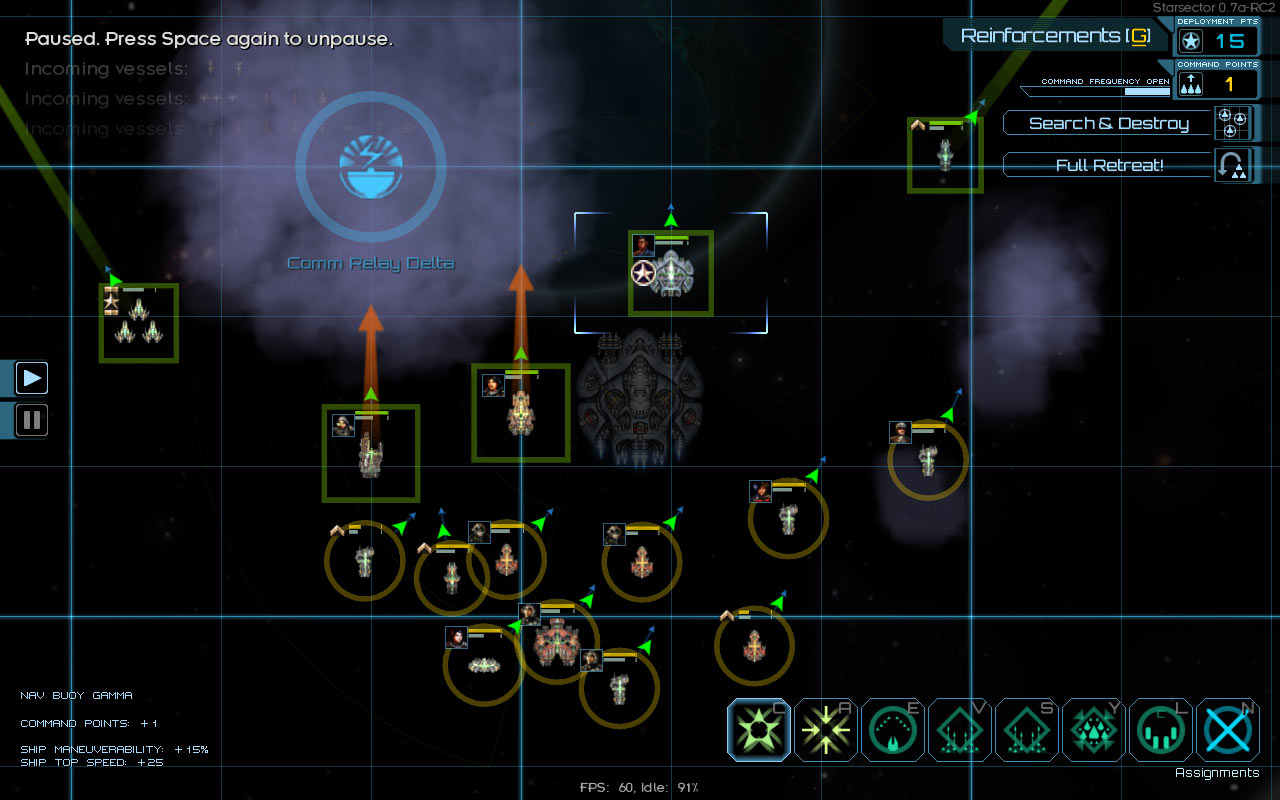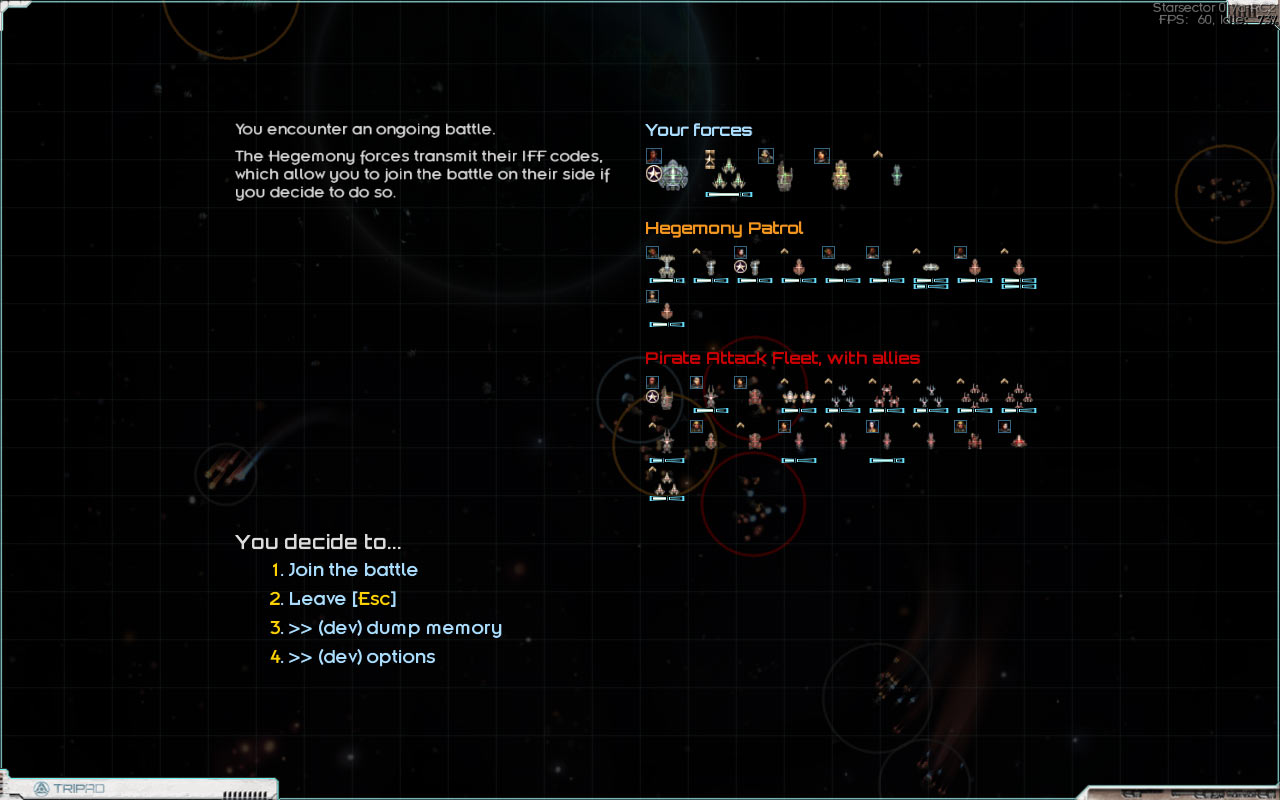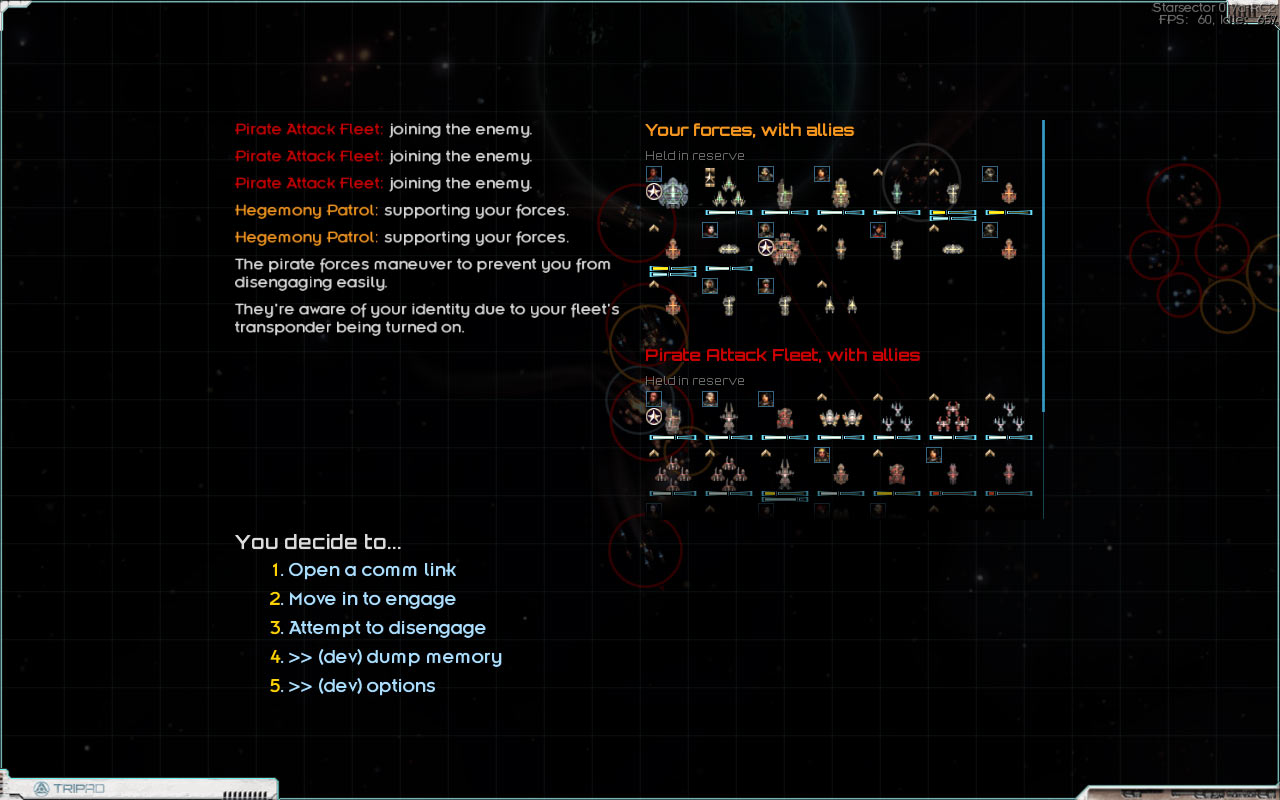Expanded Battles
First, a brief summary of what this post is about – a new campaign feature that allows nearby fleets – naturally, including yours – to join ongoing battles.
If you’ve been following the development of this release, you’re probably aware that things are in the “polish things and make it fun to play” phase more so than in the “add more features” phase. Why, then, add a significant new feature at this stage? The answer is that it’s a direct response to playtesting, rather than a specifically planned-for feature on the roadmap – it’s meant to help address several important gameplay issues, some quite long-standing. Now was a good opportunity to do it, and here we are. Looking back, I’m glad I ended up taking this on now rather than later – with how many different pieces of the code this change touches, it would only get more difficult with time.
Let’s take a brief look at what the design goals are, and then we’ll dive into the specifics of how it works.
Design Goals
The difficulty curve has always been very steep, with the game being most challenging before the player can get going with combat skills and multiple ships. There are some longer-term plans to make the late game more challenging, but that doesn’t help very much with making early game combat more forgiving. Being able to join a battle between say, pirates and a patrol offers the player a challenge that’s much easier to take on, with an appropriately reduced reward.
Another point is that, well, larger battles can be really fun, and being able to join them early on is great to get a taste of what the late-game battles can be like, without the associated risks. Not needing to worry about every loss your side suffers takes a lot of the pressure off, too – you can dart about in your flagship, in the thick of a large battle, and not worry too much about the consequences.
For the late game, it also provides an opportunity for larger battles without requiring large enemy fleets. Even several medium-sized pirates can be a challenge if they band together instead of being taken on one at a time.
Mechanics, Campaign
Battles between AI fleets take time – a couple of days or so – and other fleets can join in provided they’re friendly to one side, hostile to another, or both. The player can do this too, by interacting with any of the fleets engaged in battle and choosing the “Join battle” option. When joining an ongoing battle, your allies decide whether to fight or try to escape from a battle, and you can choose whether to join them or leave.
When the player encounters another fleet rather than an ongoing battle, nearby fleets will support one side or the other in the event hostilities break out. For example, if you interact with a Hegemony trade fleet while a patrol is nearby, they’ll move in to be able to assist the trader if needed. In another example, smaller pirate fleets can and will gang up on you, and consider nearby fleet strength when deciding whether to be aggressive.
(As a side note: the “stand down” vs “maintain contact” post-engagement options are now gone. Choosing between (maybe) recovering some combat readiness and (maybe) being able to pursue didn’t feel like a clear-cut or interesting choice. What happens instead is automatic combat readiness recovery by the winner of the engagement, if the engagement was insignificant enough to allow it. A bit of design cleanup here; nothing major.)
Mechanics, Combat
In combat, you have no control over the behavior of your allied ships – they obey orders given by their commander, decide when and what to deploy, retreat on their own, etc.
 Allied ships have yellow, circular indicators…
Allied ships have yellow, circular indicators…
 … and matching yellow combat overlays. With shiny commanding officer portraits, where appropriate.
… and matching yellow combat overlays. With shiny commanding officer portraits, where appropriate.
And that more or less sums it up, aside from a plethora of smaller details, which seem too minor to talk about in this post, but which I’ll be happy to discuss in the comments. (I’ve got to say, describing how this works was a lot faster than actually implementing it. I mean, that’s always the case, but here in particular the difference feels rather more pronounced.)
Comment thread here.
Tags: ally, battle, design, difficulty, fleet, mechanics












